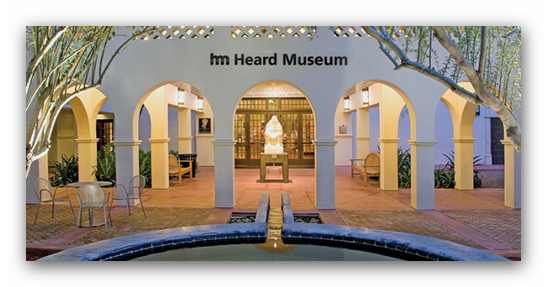-
Phoenix, AZ
Service and sacrifice spanning more than three centuries are honored in the first and only known national memorial to American Indian veterans of many conflicts. The Memorial, located outside the Collector’s Room of the Heard Museum Shop, consists of several sizable sculptures by acclaimed Native artists Chiricahua Apache sculptor Allan Houser (1914-1994) and Michael Naranjo (Santa Clara Pueblo).
The 10-foot sculpture Unconquered II is the last sculpture created by Houser. Naranjo is a Vietnam War veteran who suffered an injury that rendered him blind. Naranjo has been carving his meant-to-be-touched sculptures by feel ever since.
Several bronze-colored panels detail the story of American Indians in conflicts from the 17th century to the 21st century and pays tribute to American Indians who received the Medal of Honor, the nation’s highest military decoration. The panels’ descriptions begin with these words:
“The story of American Indian Warriors begins before there was a United States of America, and the Warrior Tradition continues rich and strong today. Honoring Warrior leaders is also a tradition that is an integral part of the story. In this spirit, the Heard Museum joins with those who keep the honoring tradition and tell the stories of bravery and sacrifice.”
One panel contains a poem, “Do Not Stand at My Grave and Weep,” written by Mary Elizabeth Frye in 1932 and has endured for 80 years. It has been translated into many languages and set to music by many composers. It has comforted people around the world and did so at a memorial service for Lori Piestewa. Her family offers it to the American Indian Veterans National Memorial.
Another panel contains a drawing and accompanying poem, “The Fear of Bo-talee,” by author N. Scott Momaday (Kiowa), from his 1992 book, In the Presence of the Sun: Stories and Poems, 1961-1991.
Credit: Overview from museum website
Exhibition Venues & Dates
-
Phoenix, AZ
